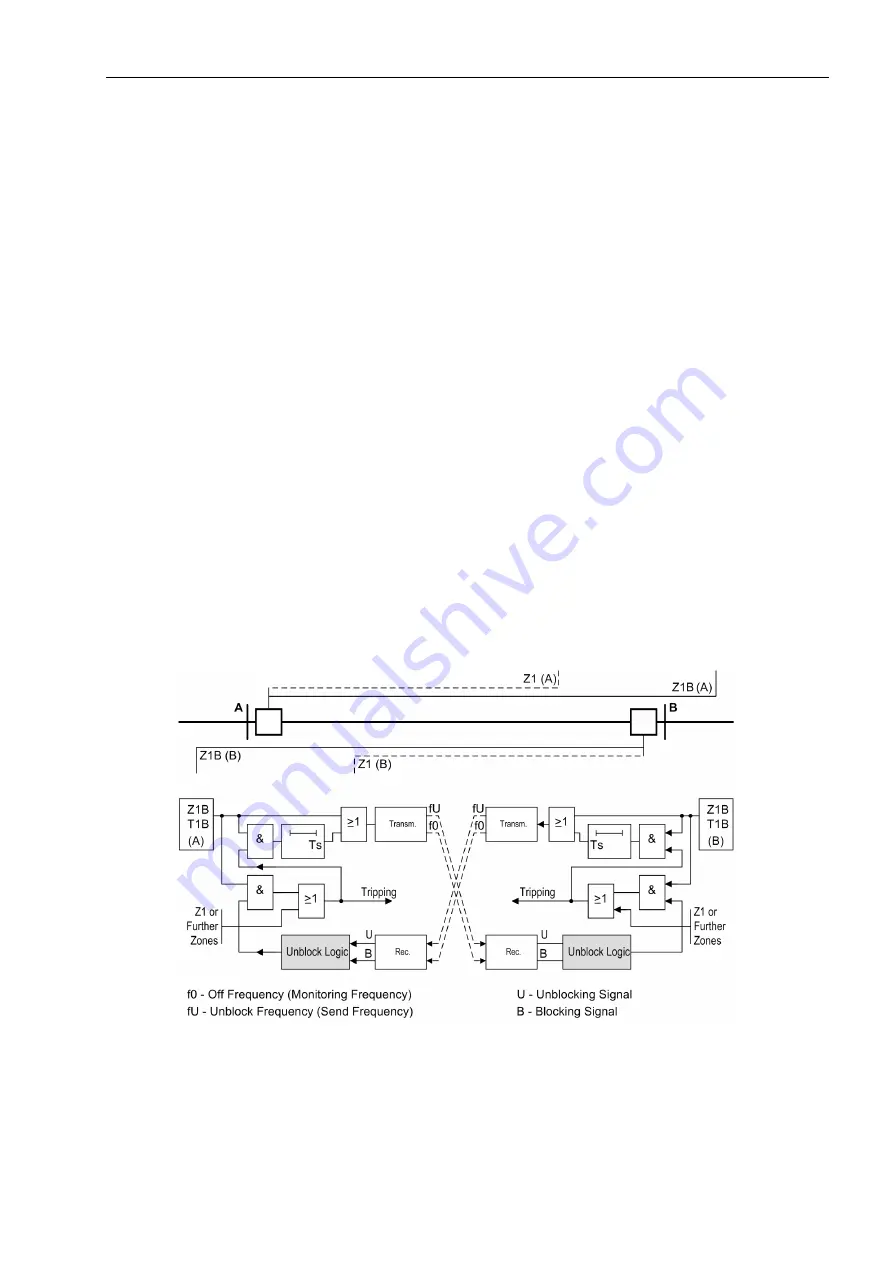
Functions
2.7 Teleprotection for Distance Protection (optional)
SIPROTEC, 7SD5, Manual
C53000-G1176-C169-5, Release date 02.2011
199
2.7.8
Unblocking Scheme
Principle
The unblocking method is a permissive release scheme. It differs from the permissive overreach transfer
scheme in that tripping is possible also when no release signal is received from the opposite line end. It is there-
fore mainly used for long lines when the signal must be transmitted across the protected line by means of power
line carrier (PLC) and the attenuation of the transmitted signal at the fault location may be so severe that re-
ception at the other line end cannot necessarily be guaranteed. Here, a special unblocking logic takes effect.
The function scheme is shown in Figure 2-92.
Two signal frequencies which are keyed by the transmit output of the 7SD5 are required for the transmission.
If the transmission device has a channel monitoring, then the monitoring frequency f
0
is keyed over to the
working frequency f
U
(unblocking frequency). When the protection recognizes a fault inside the overreaching
zone Z1B, it initiates the transmission of the unblock frequency f
U
. During the quiescent state or during a fault
outside Z1B, or in the reverse direction, the monitoring frequency f
0
is transmitted.
If a release signal is also received from the opposite end, the trip signal is forwarded to the command relay.
Accordingly, it is a prerequisite for fast tripping that the fault is recognised inside Z1B in forward direction at
both line ends. The distance protection is set in such a way that overreaching zone Z1B reaches beyond the
next station (approximately 120% of the line length). On three terminal lines, Z1B must be set to reliably reach
beyond the longer line section, even if there is an additional infeed via the tee point. The first zone is set in
accordance with the usual grading scheme, i.e. approximately 85% of the line length; on three terminal lines at
least beyond the tee point.
The transmit signal can be prolonged by T
S
(settable under address
2103
Send Prolong.
). The prolongation
of the send signal only comes into effect if the protection has already issued a trip command. This ensures
release of the opposite line end even when the short-circuit has been switched off rapidly by the independent
zone Z1.
Figure 2-92
Function diagram of the directional unblocking method
For all zones except Z1B, tripping without release from remote end is initiated, allowing the protection to func-
tion with the usual grading characteristic independent of the signal transmission.












































